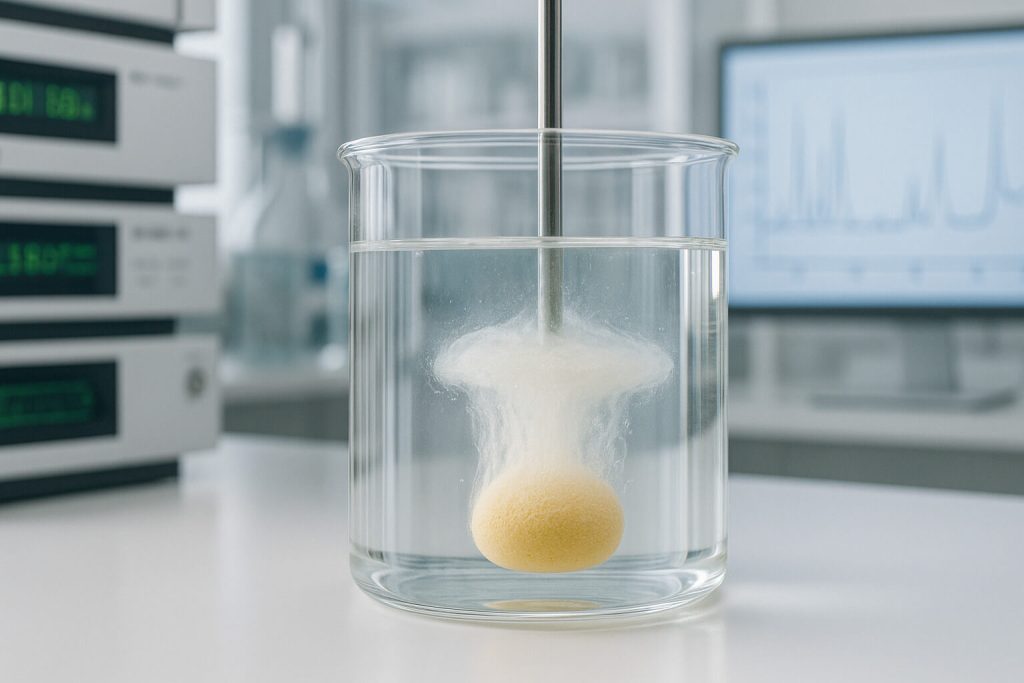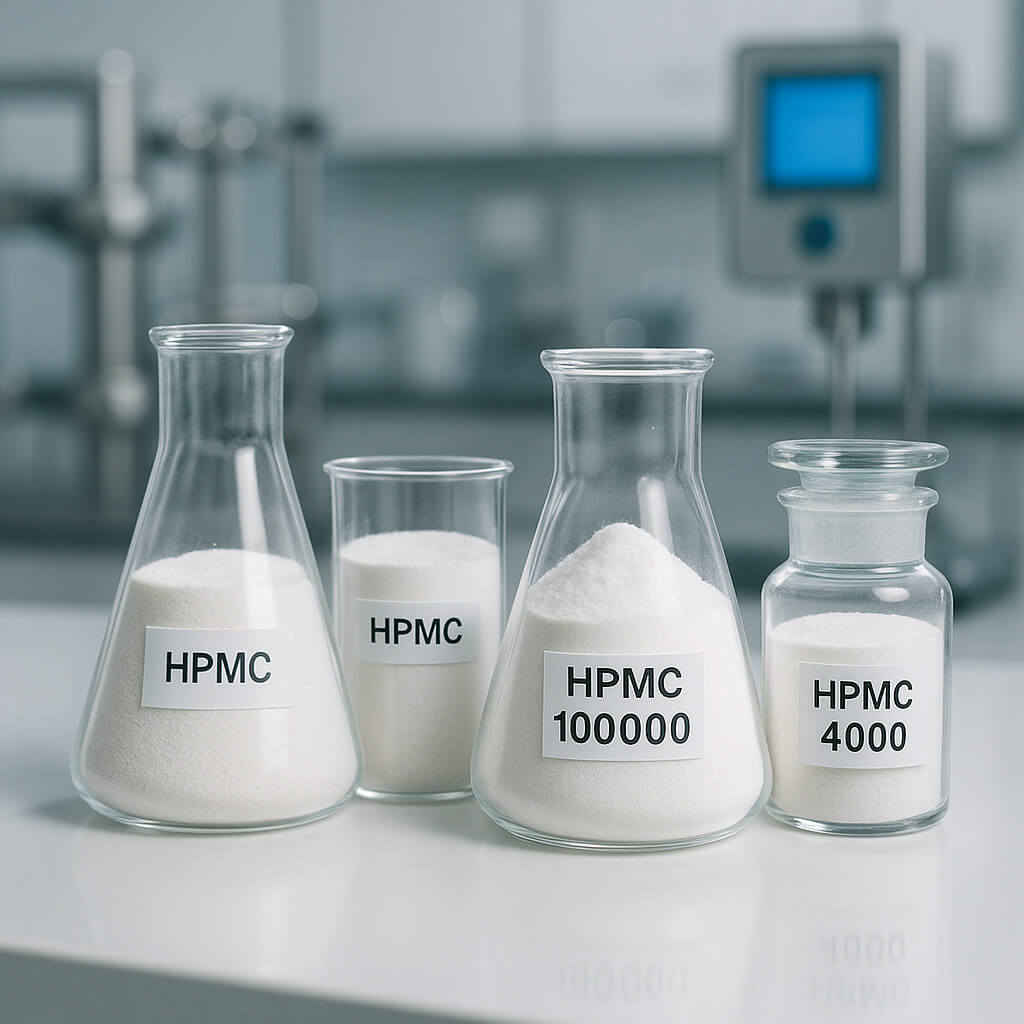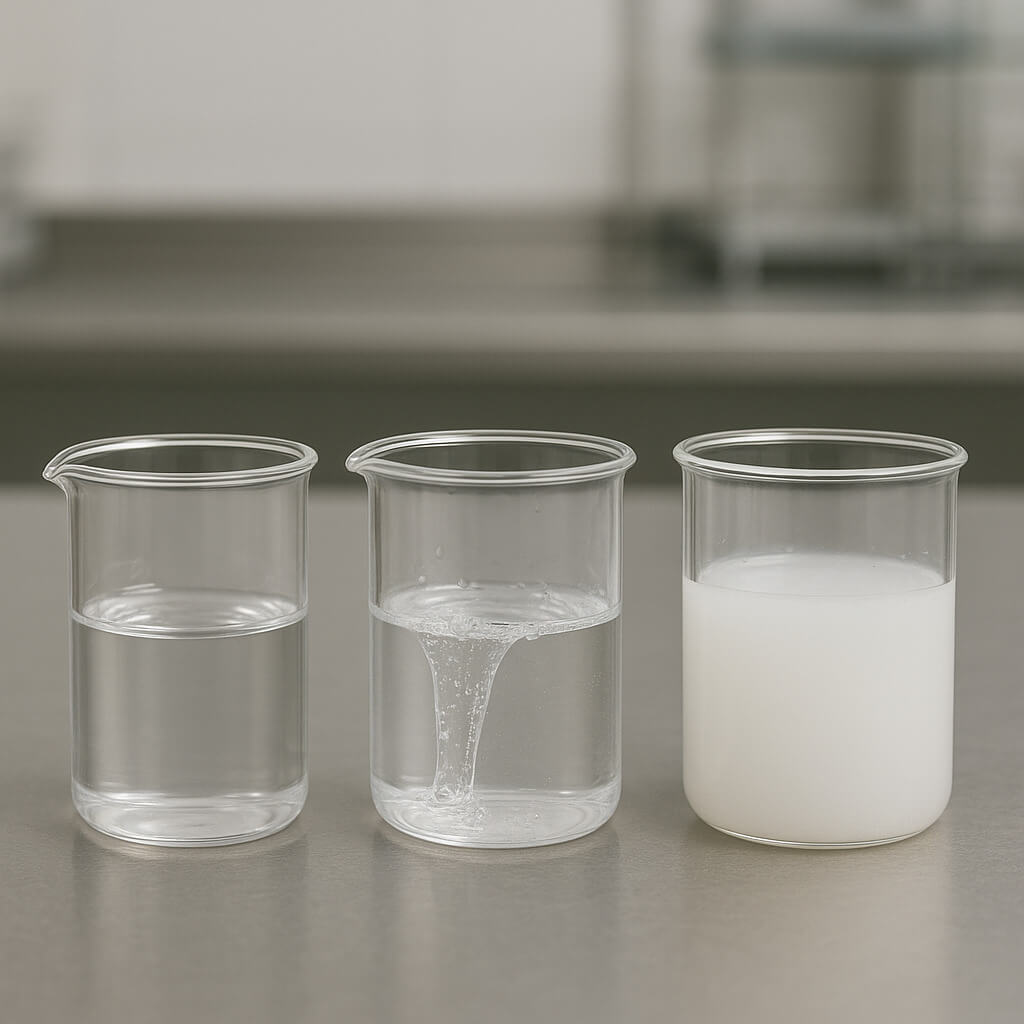Hydroxypropyl Methylcellulose (HPMC) has emerged as a cornerstone excipient in modern pharmaceutical formulations, serving multiple critical functions that directly impact drug product performance. Pharmaceutical formulators face significant challenges in developing stable, effective medications with consistent release profiles and optimal bioavailability. These challenges can lead to product failures, manufacturing inefficiencies, and compromised therapeutic outcomes. HPMC offers a versatile solution to these problems through its unique physicochemical properties, enabling controlled drug release, improved stability, and enhanced manufacturing efficiency. With decades of successful implementation across thousands of approved drug products worldwide, HPMC has established itself as a trusted excipient that pharmaceutical developers can rely on to overcome formulation challenges while meeting stringent regulatory requirements.

1. What Are The Key Properties Of HPMC That Make It Valuable For Pharmaceutical Applications?
Hydroxypropyl Methylcellulose (HPMC) possesses a unique combination of physical and chemical properties that make it exceptionally valuable in pharmaceutical formulations.
Let me show you why HPMC stands out among pharmaceutical excipients. At its core, HPMC is a semi-synthetic polymer derived from cellulose, consisting of a cellulose backbone with methoxyl and hydroxypropyl substituents. This chemical structure gives HPMC its distinctive behavior in pharmaceutical systems.
The degree of substitution—both methoxyl (typically 19-30%) and hydroxypropyl (typically 4-12%)—determines many of HPMC’s functional properties. These substitution patterns are carefully controlled during manufacturing to produce grades with specific performance characteristics.
| Eigentum | Merkmal | Pharmaceutical Benefit |
|---|---|---|
| Wasserlöslichkeit | Readily dissolves in cold water | Easy processing without organic solvents |
| Thermische Gelierung | Forms gel when heated | Temperature-responsive drug delivery |
| pH-Stabilität | Stable across pH 3-11 | Consistent performance throughout GI tract |
| Viskositätsbereich | Available from 3 to 100,000 mPa·s | Customizable for various applications |
HPMC demonstrates remarkable stability across a wide range of conditions. It maintains its functional properties across a broad pH spectrum (3-11), making it suitable for formulations designed to release drugs throughout the gastrointestinal tract.
Compatibility with active pharmaceutical ingredients (APIs) is another significant advantage of HPMC. The polymer’s non-ionic nature minimizes direct chemical interactions with most drug molecules, reducing the risk of incompatibilities.
The real power of HPMC lies in its multifunctionality. A single HPMC grade can often perform multiple roles within a formulation—functioning as a binder, film-former, controlled-release agent, and stabilizer simultaneously. This multifunctionality can simplify formulations, reduce excipient interactions, and streamline manufacturing processes.
2. How Does HPMC Function In Controlled Release Drug Delivery Systems?
Controlled release drug delivery represents one of the most significant applications of HPMC in pharmaceutical formulations. The polymer’s unique behavior in aqueous environments creates ideal conditions for modulating drug release over extended periods.
Here’s what makes this fascinating: When an HPMC-based matrix tablet encounters aqueous media, a complex sequence of events occurs that precisely controls drug release. Initially, water penetrates the tablet surface, causing HPMC particles to hydrate and form a gel layer. This gel layer acts as a diffusion barrier, controlling the rate at which drug molecules can escape from the matrix.
The controlled release mechanism of HPMC involves three primary processes: hydration, swelling, and erosion. These processes occur simultaneously but at different rates, creating a dynamic system that maintains consistent drug release over time.
| Process | Mechanismus | Auswirkungen auf die Arzneimittelfreisetzung |
|---|---|---|
| Flüssigkeitszufuhr | Water penetration into polymer matrix | Initiates gel formation and drug dissolution |
| Swelling | Volume expansion of hydrated polymer | Creates diffusion pathways for drug release |
| Erosion | Gradual dissolution of outer gel layer | Maintains constant diffusion path length |
| Diffusion | Movement of dissolved drug through gel layer | Primary mechanism controlling release rate |
You might be surprised to learn that the viscosity grade of HPMC is the primary factor affecting release kinetics. Higher viscosity grades create stronger, more cohesive gel layers that slow drug diffusion more effectively. For example, HPMC K100M (100,000 mPa·s) typically provides slower, more extended release profiles compared to HPMC K4M (4,000 mPa·s).
A comparative study of different controlled-release technologies demonstrates the advantages of HPMC-based systems:
| Technology | Auslösemechanismus | Manufacturing Complexity | Kosten | Typische Dauer |
|---|---|---|---|---|
| HPMC Matrix | Diffusion/Erosion | Niedrig | Low-Medium | 8-24 hours |
| Coated Pellets | Membrane Diffusion | Hoch | Hoch | 12-24 Stunden |
| Osmotic Pumps | Osmotic Pressure | Sehr hoch | Sehr hoch | 12-24 Stunden |
| Lipid Matrices | Erosion | Medium | Medium | 8-12 Stunden |
The bottom line is this: HPMC-based controlled release systems combine formulation simplicity with reliable performance, making them the preferred choice for many extended-release products. Their ability to maintain therapeutic drug levels over extended periods while reducing dosing frequency directly translates to improved patient outcomes.
3. What Are The Critical Quality Attributes When Selecting HPMC For Your Formulation?
Selecting the appropriate HPMC grade for a pharmaceutical formulation requires careful consideration of several critical quality attributes. Each attribute directly influences the performance, manufacturability, and regulatory compliance of the final drug product.
Sie fragen sich vielleicht which parameters matter most when choosing an HPMC grade. Viscosity stands out as perhaps the most influential characteristic, directly impacting drug release kinetics, coating thickness, binding strength, and manufacturing processability.
| Viskositätskategorie | Typical Range (mPa·s) | USP/EP Designation | Häufige Anwendungen |
|---|---|---|---|
| Niedrig | 3-15 | E3, E5, E15 | Film coating, binder for immediate release |
| Medium | 40-4,000 | E50, K100, K4M | Modified release, wet granulation |
| Hoch | 4,000-15,000 | K4M, K15M | Sustained release matrices |
| Ultra-High | 15,000-100,000 | K15M, K100M | Extended release (12-24 hour) |
Folgendes ist wichtig zu verstehen: The ratio between methoxyl and hydroxypropyl substitution directly affects properties such as thermal gelation temperature, surface activity, organic solubility, and hydration rate. Common substitution types include:
- HPMC 2208 (USP/EP): Contains 19-24% methoxyl and 4-12% hydroxypropyl groups
- HPMC 2906 (USP/EP): Contains 27-30% methoxyl and 4-7.5% hydroxypropyl groups
- HPMC 2910 (USP/EP): Contains 28-30% methoxyl and 7-12% hydroxypropyl groups
Particle size distribution significantly impacts both manufacturing performance and final product characteristics. Finer particle sizes generally hydrate more rapidly but may present flow challenges during manufacturing. Coarser grades offer better flow properties but may hydrate more slowly.
The key takeaway is that selecting the optimal HPMC grade requires balancing multiple quality attributes against your specific formulation requirements. By carefully evaluating viscosity, substitution type, particle size, and regulatory specifications, you can identify the HPMC grade that will provide optimal performance in your pharmaceutical product.
4. How Is HPMC Applied In Various Pharmaceutical Dosage Forms?
HPMC demonstrates remarkable versatility across pharmaceutical dosage forms, serving multiple functions that enhance drug product performance. Its application extends from solid oral dosage forms to semi-solids and liquids.
What many formulators find most valuable is HPMC’s exceptional performance in tablet coating applications. As a film-forming agent, HPMC creates uniform, elegant coatings that serve multiple functions beyond mere aesthetics. These coatings can mask unpleasant tastes, protect sensitive ingredients from environmental factors, improve swallowability, and even modify drug release profiles.
| Beschichtungstyp | HPMC-Konzentration | Functional Additives | Primary Benefits |
|---|---|---|---|
| Cosmetic | 5-7% | Colorants, Plasticizers | Improved appearance, Brand identification |
| Functional | 7-9% | Plasticizers, Opacifiers | Taste masking, Light protection |
| Moisture Barrier | 8-10% | Hydrophobic additives | Protection from humidity |
| Modified Release | 10-15% | Plasticizers, Pore formers | Controlled drug delivery |
Matrix tablet formulation represents another major application area for HPMC. In these systems, HPMC is distributed throughout the tablet matrix, creating a three-dimensional network that controls drug release through diffusion and erosion mechanisms.
Here’s a practical insight: The ratio between HPMC and drug significantly impacts release kinetics. Higher HPMC-to-drug ratios generally result in slower, more extended release profiles. This relationship allows formulators to fine-tune release rates by adjusting the polymer concentration.
In capsule manufacturing, HPMC serves both as a capsule shell material and as a functional excipient within capsule formulations. HPMC capsules offer several advantages over traditional gelatin capsules, including suitability for vegetarian products, reduced sensitivity to moisture variations, and better stability with hygroscopic drugs.
For liquid formulations, HPMC functions primarily as a viscosity modifier and stabilizer. In ophthalmic preparations, HPMC increases solution viscosity, prolonging contact time with the ocular surface and improving drug bioavailability.
5. What Manufacturing Challenges Can HPMC Help Overcome?
Pharmaceutical manufacturing presents numerous challenges that can impact product quality, process efficiency, and regulatory compliance. HPMC offers solutions to many of these challenges through its versatile functional properties.
What many production managers don’t realize is that HPMC can transform problematic formulations into robust, manufacturable products. Poor powder flow represents one of the most common challenges in solid dosage manufacturing, leading to weight variation, content uniformity issues, and reduced production speeds.
| Manufacturing Challenge | How HPMC Addresses It | Measurable Benefit |
|---|---|---|
| Poor Powder Flow | Improves flow as dry binder | Reduced weight variation (<2% RSD) |
| Low Tablet Hardness | Enhances particle binding | Increased hardness (>8 kp) with lower compression force |
| Capping/Lamination | Improves plastic deformation | Reduced tablet defects (<0.1%) |
| Sticking to Punch Faces | Forms protective barrier | Decreased punch cleaning frequency |
| Content Uniformity | Prevents segregation | Improved uniformity (RSD <3%) |
Here’s something particularly valuable: HPMC can dramatically improve the stability of challenging formulations. Many active pharmaceutical ingredients are sensitive to moisture, oxygen, or light, leading to degradation during storage. HPMC’s film-forming properties enable the creation of protective barriers that shield sensitive ingredients from environmental factors.
Enhancing bioavailability of poorly soluble drugs represents one of the most significant challenges in modern pharmaceutical development. HPMC plays a crucial role in several bioavailability enhancement strategies:
- Amorphous solid dispersions: HPMC stabilizes amorphous drug forms, preventing recrystallization
- Nanocrystal stabilization: HPMC prevents agglomeration of drug nanoparticles
- Self-emulsifying systems: HPMC improves stability and drug precipitation inhibition
- Spray-dried dispersions: HPMC serves as a carrier polymer for solubility enhancement
Scale-up and technology transfer challenges often plague pharmaceutical development. HPMC-based formulations typically demonstrate robust performance across manufacturing scales, simplifying scale-up procedures and reducing regulatory risks.
6. How Does HPMC Compare To Alternative Excipients In Performance And Cost-Effectiveness?
When selecting excipients for pharmaceutical formulations, developers must balance performance requirements with economic considerations. HPMC offers a compelling value proposition when compared to alternative excipients.
The surprising truth is that the true cost-effectiveness of an excipient extends far beyond its purchase price. A comprehensive assessment must consider manufacturing efficiency, regulatory advantages, stability benefits, and therapeutic performance—areas where HPMC demonstrates significant value.
| Excipient Type | Relative Raw Material Cost | Multifunctionality | Excipient Reduction Potential | Overall Cost Impact |
|---|---|---|---|---|
| HPMC | Mäßig | Hoch | Significant | Favorable |
| Polymethacrylates | Hoch | Mäßig | Beschränkt | Mäßig |
| Polyvinylpyrrolidone | Mäßig | Mäßig | Mäßig | Mäßig |
| Ethylcellulose | Hoch | Niedrig | Beschränkt | Unfavorable |
| Starch Derivatives | Niedrig | Niedrig | Minimal | Variable |
What makes HPMC particularly valuable is its performance consistency across manufacturing scales and conditions. When compared to other hydrophilic matrix formers like polyethylene oxide or sodium alginate, HPMC demonstrates superior batch-to-batch consistency and stability during storage. This reliability reduces manufacturing variability, decreases rejection rates, and minimizes the need for process adjustments.
Environmental and sustainability considerations increasingly influence excipient selection decisions. As a cellulose derivative, HPMC offers advantages over petroleum-based synthetic polymers in terms of renewable sourcing and environmental impact.
When assessed across multiple dimensions, HPMC frequently emerges as a cost-effective choice that balances economic considerations with performance requirements. Its versatility, reliability, and established regulatory status make it an attractive option for pharmaceutical formulators seeking to optimize both product performance and economic efficiency.
Abschluss
Hydroxypropyl Methylcellulose (HPMC) has established itself as an essential excipient in modern pharmaceutical formulations, offering unparalleled versatility across diverse applications. Throughout this article, we’ve examined how HPMC’s unique chemical structure and physical properties enable it to address critical formulation challenges, from controlling drug release profiles to enhancing manufacturing efficiency. Its exceptional stability across various conditions, compatibility with most active ingredients, and well-established regulatory status make it a preferred choice for pharmaceutical developers worldwide. The ability to select from various viscosity grades, substitution types, and particle sizes allows formulators to precisely tailor HPMC’s functionality to specific application requirements. When compared to alternative excipients, HPMC consistently demonstrates superior cost-effectiveness when considering total formulation costs, manufacturing simplicity, and therapeutic benefits. For pharmaceutical manufacturers navigating the complex landscape of excipient selection, HPMC represents a proven solution that balances functionality, regulatory compliance, and economic considerations.
FAQ-Bereich
Q1: What grades of HPMC are best suited for extended-release tablet formulations?
When developing extended-release tablet formulations, high viscosity grades of HPMC (typically 4,000-100,000 mPa·s) are most suitable. HPMC K15M and K100M are particularly effective for 12-24 hour release profiles due to their robust gel formation and consistent hydration properties. The optimal grade selection depends on your target release duration, drug solubility, and dose requirements. For highly soluble drugs, higher viscosity grades like K100M may be necessary to adequately control release. For poorly soluble compounds, lower viscosity grades such as K4M might provide sufficient control.
Q2: Can HPMC be used in combination with other polymers in pharmaceutical formulations?
HPMC demonstrates excellent compatibility with numerous other polymers, creating opportunities for synergistic formulation benefits. Common polymer combinations include HPMC with ethylcellulose to modulate release kinetics, HPMC with carbomers to enhance mucoadhesive properties, and HPMC with polyvinylpyrrolidone to improve solubility enhancement effects. These combinations can achieve release profiles or functional properties that would be difficult to attain with a single polymer. Compatibility studies and dissolution testing are essential when developing multi-polymer systems containing HPMC.
Q3: How does temperature affect the performance of HPMC in drug products?
Temperature significantly influences HPMC behavior in pharmaceutical formulations through its unique thermal gelation properties. Unlike most polymers that become more soluble at higher temperatures, HPMC solutions exhibit inverse solubility, forming gels when heated above their thermal gelation temperature (typically 70-90°C, depending on the grade). This property affects both manufacturing processes and drug release performance. During production, heating HPMC solutions above the gelation temperature can cause precipitation, potentially affecting content uniformity.
Q4: What analytical methods are used to characterize HPMC in pharmaceutical development?
Several analytical methods are essential for characterizing HPMC during pharmaceutical development. Viscosity determination using rotational viscometers is perhaps the most critical test, as it directly correlates with drug release performance and processing behavior. Substitution type verification through infrared spectroscopy and methoxyl/hydroxypropyl content analysis via gas chromatography confirms the correct HPMC classification. Particle size distribution analysis using laser diffraction ensures manufacturing consistency, while gel point determination helps predict thermal behavior.
Q5: How does HPMC contribute to patient-centric drug product design?
HPMC significantly enhances patient-centric drug product design through several mechanisms directly linked to its pharmaceutical functionality. By enabling extended-release formulations, HPMC reduces dosing frequency from 3-4 times daily to once or twice daily regimens, substantially improving adherence rates, particularly for patients on multiple medications or with cognitive impairments. The controlled release profiles achieved with HPMC minimize peak-trough fluctuations in plasma drug concentrations, reducing side effects associated with high peak levels while maintaining therapeutic efficacy.




